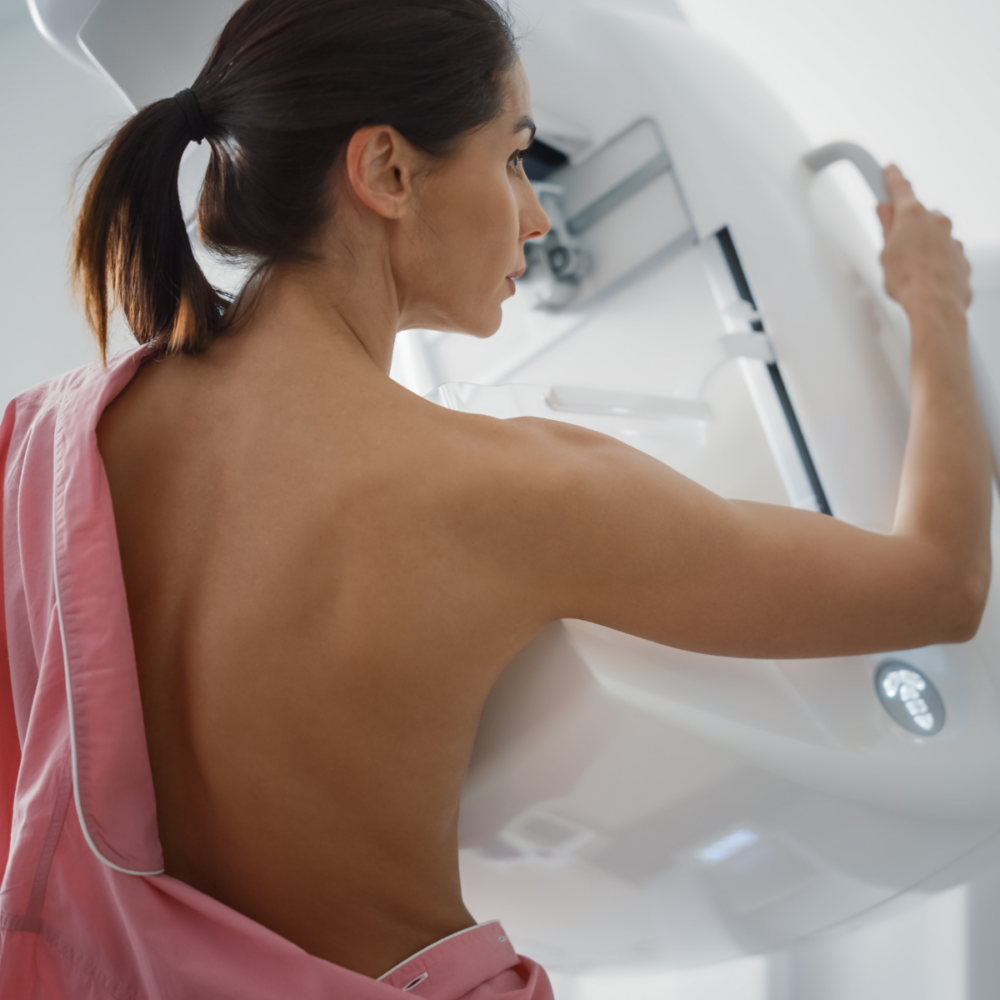ማሞግራም ማግኘት ምን ይመስላል?

Getting a mammogram can be scary. What will it be like? Will it hurt? What if they find something? Routine cancer screenings—like mammograms—can detect cancer early (even if you have no signs or symptoms!) and if cancer is found early, it increases the likelihood your treatment will be successful. Feeling nervous is quite common, particularly if it is your first mammogram. But don’t let fear stand in the way of taking care of your health. Knowing what it’s like to get a mammogram can reduce your anxiety and make the experience a whole lot easier!
When you schedule your mammogram, try to book your appointment for one to two weeks after your menstrual period is due to start. Your breasts will be less tender during this time, making your mammogram experience more comfortable. When possible, try to schedule your mammogram before you have any vaccinations but do not delay getting screened because of it1. You can eat and drink as normal on the day of your appointment. Be sure not to wear deodorant, lotion, powder or perfume under your arms or on your breasts as they can interfere with your results.
Upon arriving at the mammogram center, you’ll be asked a few questions about your health (including recent vaccinations – date and in which arm they were given) and about recent exposure to anyone who has had COVID-19. From there, you’ll make your way to the imaging area. You’ll meet the radiology technician, who will ask some additional questions. Be sure to tell them about any breast problems (e.g. pain, lumps, redness) you’re having or if there is any possibility you may be pregnant. (Although there is only a small risk to a developing baby from the radiation used during the test, most often screening mammograms are not performed in someone who is pregnant.) The technologist will ask you to undress completely from the waist up and give you a hospital gown to wear.
There are two main types of screening mammograms performed today: 2D and 3D (breast tomosynthesis) that each work by passing X-rays from the machine through your breast tissue. In 2D mammograms, a picture of your breast is taken from the side and from above. In 3D mammograms, multiple pictures of your breast are taken from different angles to create a 3D image. If you have dense breasts (i.e., more fibrous connective and glandular tissue than average), 3D mammograms can help doctors see beyond areas of density that can make cancer harder to see on film.
With either type of mammogram, the technologist will position your breast by placing it on a platform in the machine. This can be cold! Your breast will then be slowly squeezed flat (“compressed”) with a clear piece of plastic for about 15 seconds. This can be uncomfortable but should not hurt. You will be asked to hold your breath while the X-ray images are being taken. Once complete, the compression will be released, and you will repeat the same process with your opposite breast. The technologist will check to make sure the images are adequate, and you will then be taken back to the dressing room where you can get dressed and go on about your day. (Including putting on deodorant or powder!)
The radiologist will read your mammogram, and within a few days, you will receive a letter with the results. If they see anything suspicious, you will get a phone call and be asked to come back for additional tests. If this is your first mammogram, don’t be surprised if you get a phone call asking you to return. This happens to many of us (including me)! Most times, there is nothing wrong; it is because the radiologist has no prior mammogram to compare your results to and may want to do additional imaging to make sure all is okay.
With a little preparation (and deep breaths), your mammogram doesn’t have to be a frightening experience. You’ve taken a great first step by knowing what to expect; now make sure that you are following the latest screening recommendations based on your needs and get your appointment on the books as soon as possible. ጎብኝ our website to learn more about the cancer screenings you need.
1You may have seen recommendations that you schedule your mammogram around receiving certain vaccinations like the COVID-19 vaccine, as they can cause swollen lymph nodes under your arm. This swelling is temporary and is a normal response of your immune system. Those recommendations have been updated and experts no longer recommend routinely delaying your mammogram due to having received a vaccination.